Nobody enjoys a soggy potato salad swimming in watery dressing. This summer favorite should be creamy, flavorful, and perfectly textured—not a soupy mess at your picnic or barbecue. Watery potato salad happens for several simple reasons, from potato choice to preparation methods. Luckily, fixing this common kitchen problem doesn’t require any special equipment or ingredients—just a few clever techniques.
1. Choose the Right Potatoes
Potato variety makes all the difference between a firm salad and a watery disaster. Waxy potatoes like Yukon Gold or Red potatoes contain less starch and maintain their structure after cooking, unlike their starchy cousins such as Russets.
These firmer varieties won’t break down and release excess moisture into your salad. Their cell walls hold together better during boiling and mixing, creating those perfect potato chunks everyone loves.
Next time you’re at the grocery store, reach for those small red potatoes or golden-fleshed Yukons. Their naturally creamy texture and ability to hold shape means they’ll absorb your dressing without turning mushy or releasing the dreaded potato water that ruins so many salads.
2. Cook Potatoes Just Until Tender
Timing is everything when boiling potatoes for your salad. The moment they reach fork-tender perfection is your signal to act fast—overcooking even by a minute can lead to waterlogged results.
Start by placing similarly-sized potato chunks in cold water, then bring to a gentle boil. Test frequently by piercing with a fork; you want slight resistance in the center but no crunchiness. When ready, they should yield to the fork without falling apart.
Immediately drain them once they reach this sweet spot. Many cooks make the mistake of letting potatoes sit in hot water after cooking, which continues the cooking process and breaks down more cell walls, releasing additional moisture that will later pool in your salad bowl.
3. Drain and Dry Thoroughly
The secret weapon against watery potato salad might just be patience during the draining process. After cooking, don’t rush to the next step—instead, give those potatoes proper drying time.
First, drain them in a colander, giving a gentle shake to release trapped water. Then spread the potato pieces in a single layer on a baking sheet lined with paper towels or a clean kitchen towel. Allow them to steam-dry for 10-15 minutes, which lets excess moisture evaporate from the surface.
For extra insurance against sogginess, you can even place the baking sheet of potatoes in a low oven (200°F) for 5 minutes. This extra step drives off surface moisture without further cooking the potatoes, ensuring your salad stays creamy instead of watery.
4. Season While Warm
A game-changing technique used by professional chefs is seasoning potatoes during their temperature sweet spot. Warm potatoes act like tiny sponges, eagerly absorbing flavors that would merely coat cold potatoes.
While your potatoes are still warm (not hot), sprinkle them with vinegar, salt, and dry seasonings. White vinegar, apple cider vinegar, or even pickle juice works beautifully here. The acid penetrates deeply, creating flavor from within rather than just on the surface.
However, hold off on adding mayonnaise or other creamy ingredients until the potatoes cool completely. Adding these too early causes them to melt and separate, contributing to that soupy texture we’re trying to avoid. This two-stage dressing approach gives you the best of both worlds—deeply flavored potatoes in a stable, creamy dressing.
5. Let Potatoes Cool Completely
Patience pays off when making perfect potato salad. Hot potatoes and cold mayonnaise create a temperature clash that spells disaster for your salad’s texture.
When warm potatoes meet cold creamy dressing, condensation forms as steam rises and then cools. This added moisture thins your dressing and collects at the bottom of your bowl. After seasoning warm potatoes with vinegar and spices, spread them on a baking sheet for quicker cooling.
Room temperature works fine, but for best results, refrigerate your seasoned potatoes for 30 minutes before adding mayonnaise or sour cream. This cooling period also allows the potatoes’ starches to set, making them less likely to break apart when you fold in the remaining ingredients. Your potato salad will maintain its texture longer, even during outdoor summer gatherings.
6. Use Full-Fat Mayo or Dressing
The creamy foundation of your potato salad deserves careful consideration. Low-fat or diet mayonnaise products might seem like a healthy choice, but they’re often the culprits behind watery salads.
Regular, full-fat mayonnaise contains emulsifiers that help bind ingredients together and resist separating. These emulsifiers create stability in your dressing, preventing that watery layer from forming at the bottom of your bowl. The higher fat content also provides better coating power, wrapping each potato piece in creamy goodness.
If you’re looking for alternatives, Greek yogurt makes an excellent substitute with its thick consistency and tangy flavor. Just be sure to choose full-fat versions here too. Another trick is mixing a tablespoon of Dijon mustard into your dressing—it contains natural emulsifiers that help everything stay beautifully blended instead of separating into layers.
7. Avoid Watery Add-Ins
Fresh vegetables add wonderful crunch and flavor to potato salad, but many bring unwanted moisture along for the ride. Cucumber, tomatoes, and even raw onions are secret saboteurs that release water after they’re mixed in.
Try this chef’s trick: salt watery vegetables in a colander for 15 minutes before adding them to your salad. This draws out excess moisture through osmosis. After salting, blot them dry with paper towels to remove both the salt and the extracted water.
For onions, soak them in ice water for 10 minutes, then thoroughly dry before adding. This reduces their moisture while also mellowing their sharp flavor. Bell peppers and celery add crunch with less water content, making them safer choices. Pickles are pre-brined and surprisingly don’t contribute much excess moisture, so feel free to add them for tangy crunch.
8. Mix Gently with the Right Technique
Your mixing method can make or break your potato salad’s texture. Aggressive stirring damages potato pieces, releasing their starchy insides which turn your dressing watery and gluey.
Instead of stirring, master the gentle folding technique. Using a silicone spatula, slide it under the ingredients and lift them over the top in a turning motion. This preserves the potato chunks’ integrity while still distributing dressing evenly throughout the salad.
Another pro tip: reserve a small portion of your dressing. Mix most of it in with your gentle folding technique, then let the salad rest in the refrigerator for an hour. The potatoes will absorb some moisture from the dressing, potentially leaving it drier than desired. Before serving, evaluate the texture and fold in your reserved dressing if needed for perfect creaminess without wateriness.
9. Refrigerate Before Serving
Chilling time isn’t just for flavor development—it’s a crucial step for texture perfection in your potato salad. The refrigeration process allows ingredients to fully bond while firming up the dressing components.
After mixing your salad, cover it tightly and refrigerate for at least one hour, though three to four hours is ideal. During this time, mayo-based dressings firm up significantly as the oils in the mayonnaise cool and solidify slightly. This creates a more stable emulsion that’s less likely to separate or thin out.
The cold temperature also helps potatoes fully absorb seasonings while allowing excess moisture to be reabsorbed rather than pooling. An added bonus: chilled potato salad is food-safe for longer at outdoor gatherings. Just remember to keep it in the cooler until serving time, and never leave it sitting in the sun where warming could cause separation.
10. Store It Properly
Even perfectly made potato salad can turn watery during storage without proper containment. The villain here is condensation—that sneaky moisture that forms when warm air hits cold surfaces inside your refrigerator.
Select a container with an airtight seal, and fill it as full as possible with your potato salad, leaving minimal airspace. This reduces the surface area where condensation can form. Before sealing, place a paper towel directly on the salad’s surface to absorb any moisture that might develop.
Keep your potato salad away from the back of the refrigerator where temperatures fluctuate most when the door opens. The middle shelf maintains the most consistent temperature. When serving from a larger batch, transfer only what you need to a serving bowl rather than repeatedly warming and cooling the entire container, which creates more condensation with each temperature change.
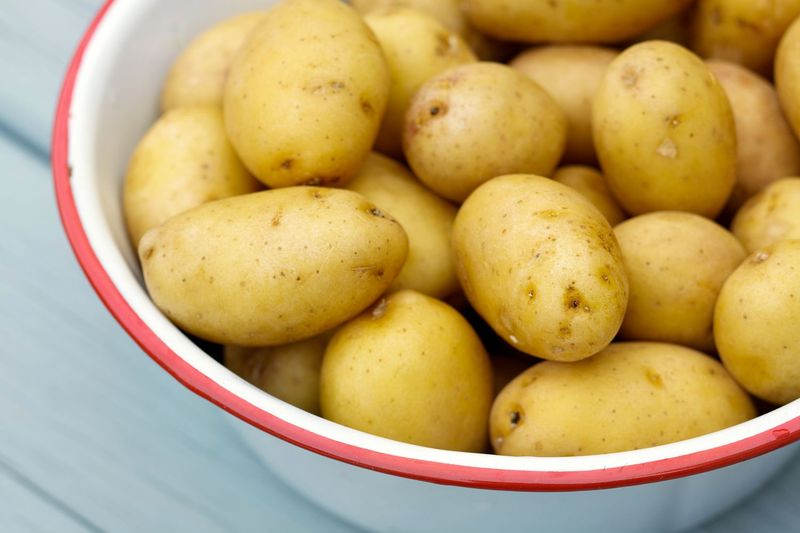
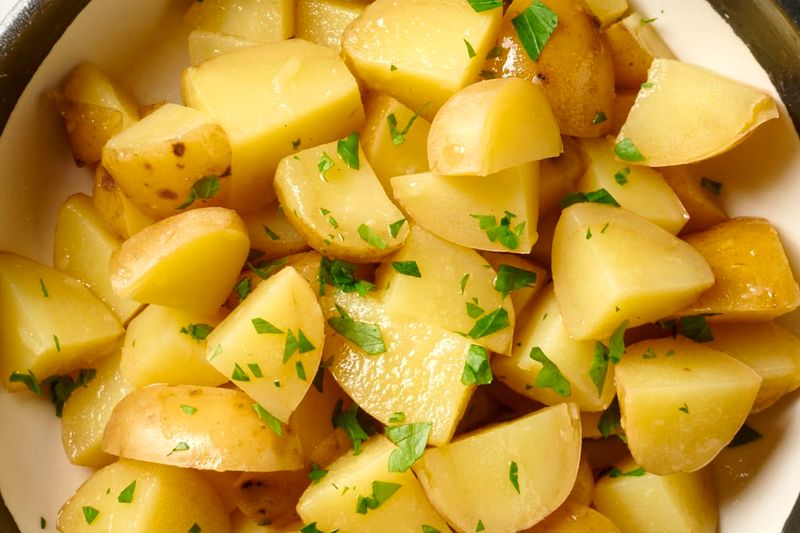
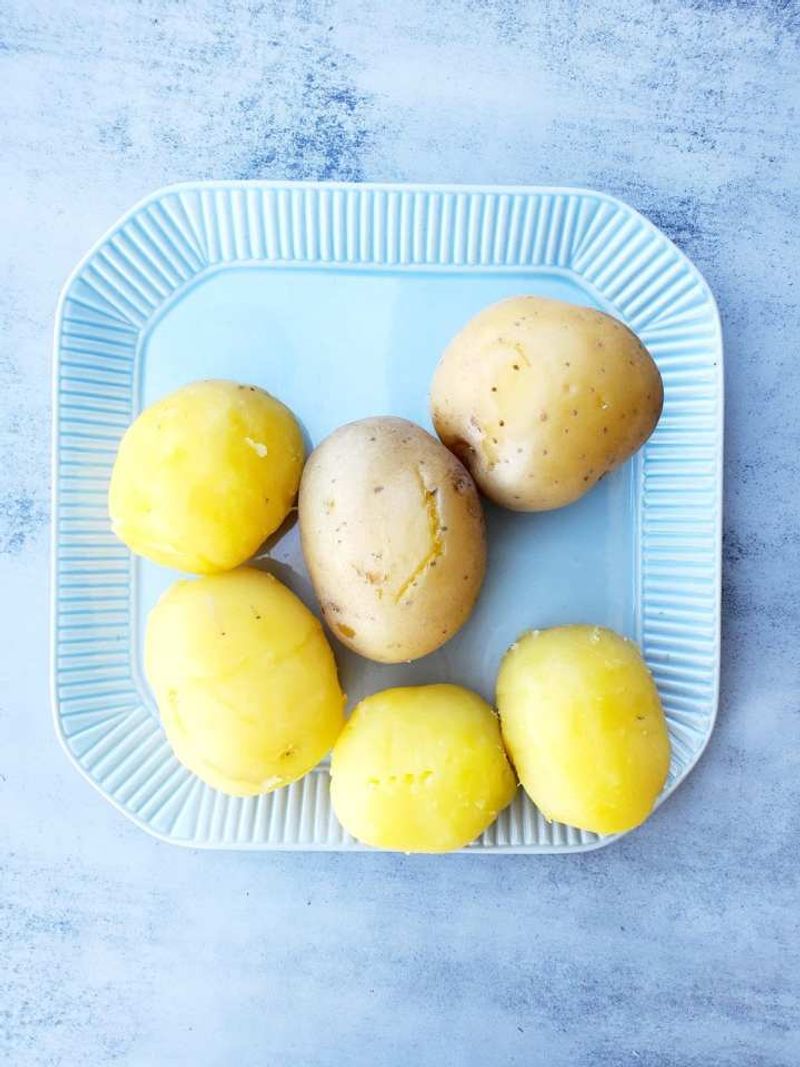
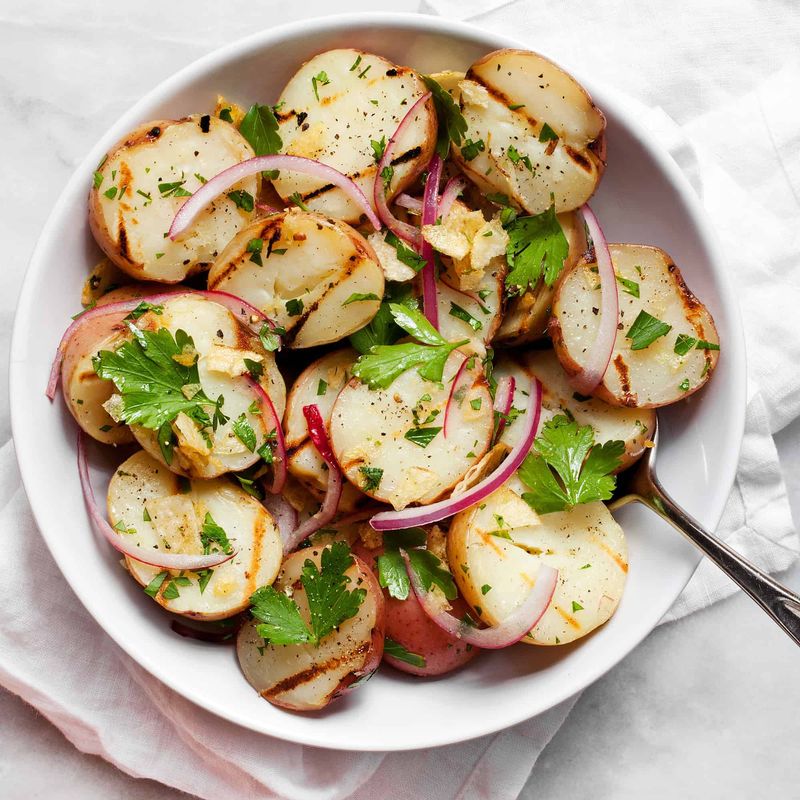


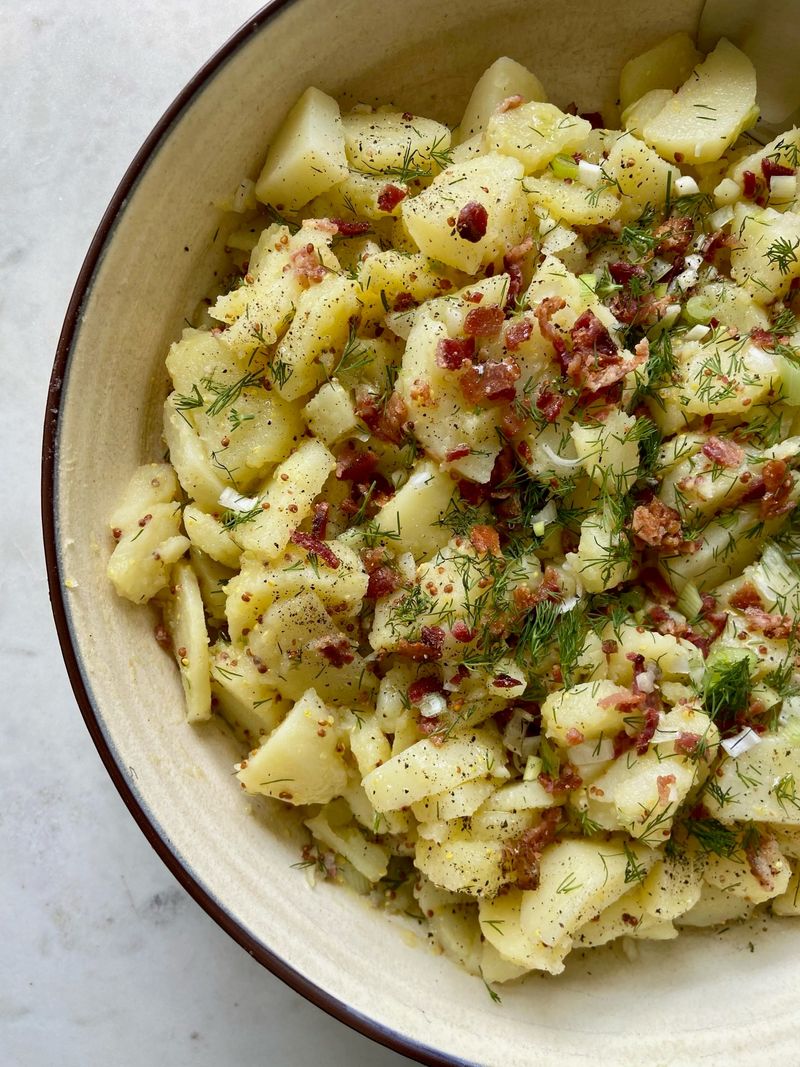



Leave a comment